Where Do Orangutans Live?
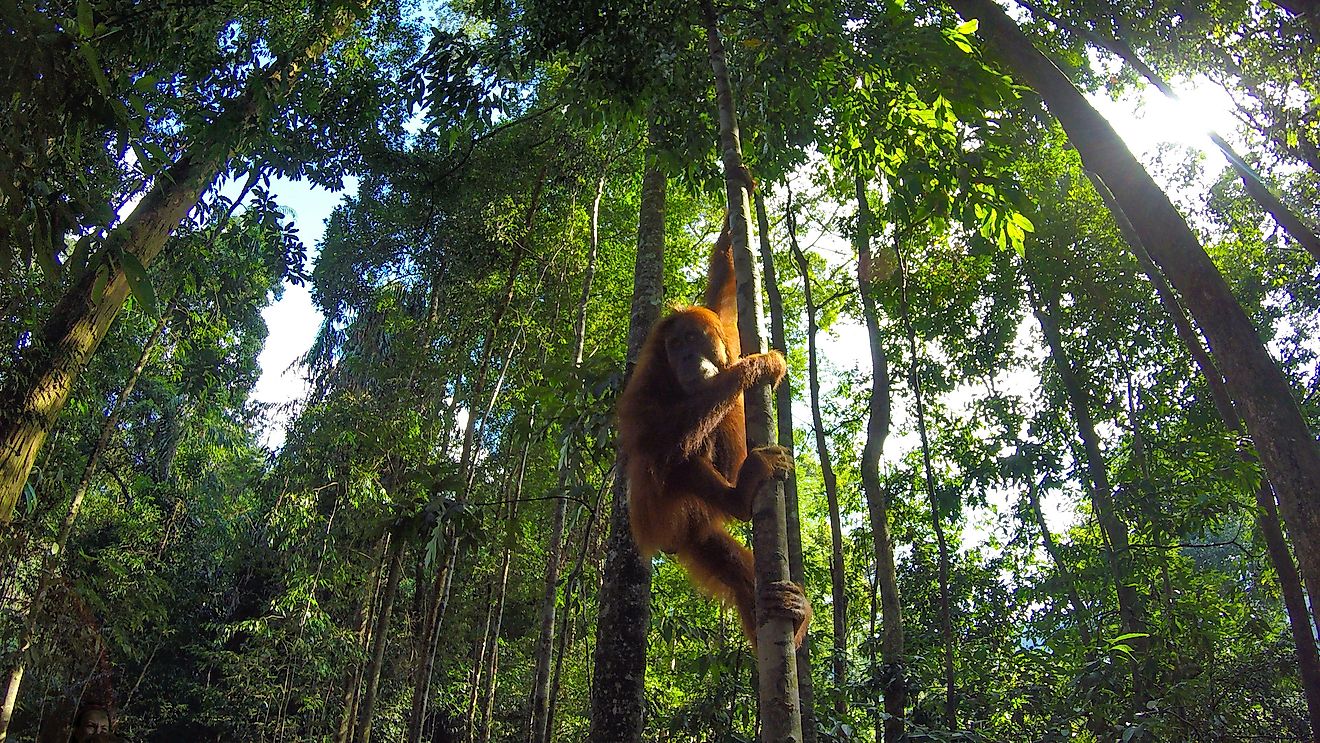
- Tropical rainforests are the ideal habitat for orangutans as they spend about 90% of their time in the trees.
- Orangutans once lived throughout Southeast Asia, southern China, and the island of Java in Indonesia but are now only found in Borneo and Sumatra.
- The Bornean, Sumatran, and Tapanuli orangutans are all critically endangered.
Orangutans are one of the great apes, a list that includes gorillas, chimpanzees, bonobos, and humans. Their distinct, bright orange fur and long arms help distinguish them from the other great ape species. The name orangutan, which derives from the Malay language, means "man of the forest." These creatures are the world's largest arboreal mammals and spend most of their time on the trees. There are three orangutan species: Borean, Sumatran, and Tapanuli. All three species are critically endangered and have become extinct in many parts of Asia.
Range
Orangutans once lived throughout Southeast Asia, southern China, and the island of Java in Indonesia. However, due to drastic population declines since the 20th century as a result of human activities, all orangutan species are now only found in Borneo, an island split between Indonesia, Malaysia, and Brunei, and Sumatra, an island in Indonesia.
About 7,300 orangutans live in northern Sumatra in the Indonesian provinces of Kalimantan Tengah, Kalimantan Barat, and Kalimantan Timur. Orangutans can also be found in the Malaysian states of Sabah and Sarawak in northern Borneo. However, there are no permanent orangutan populations in Brunei. More than 50% of all wild orangutans live in the Indonesian province of Kalimantan Tengah.
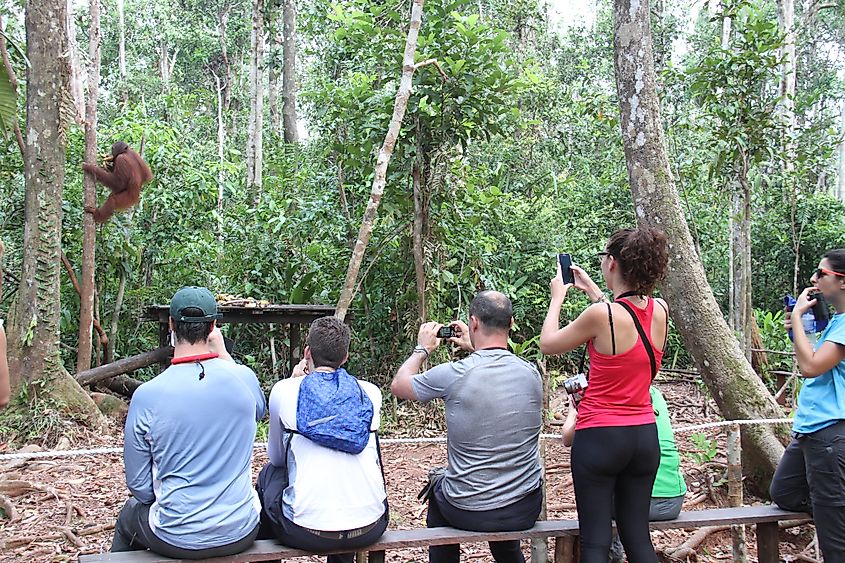
Currently, about 113,000 orangutans are living in the wild, the majority of them being Bornean orangutans. This species has an estimated population of about 104,700. The Sumatran orangutans have a population of 7,500, and the Tapanuli orangutan has a population of no more than 800.
The IUCN estimates that orangutans will lose about 3,500 to 5,000 individuals a year. The Bornean orangutans lost more than 100,000 individuals in the past 16 years, while the Sumatran and Tapanuli orangutans lost more than 60% of their vital habitats between 1985 and 2007.
Habitat
Orangutans live in one of the most biologically diverse regions on Earth in Borneo and Sumatra's tropical rainforests. These islands carry 10% of Indonesia's known plant species, 12.5% of its mammals, and 17% of other vertebrates despite only representing 1.2% of its landmass. Borneo has 15,000 species of flowering plants, which is the same as the flowering plant diversity in all of Africa.
Orangutans inhabit the tropical and swampy forests in Sumatra and Borneo, the only great ape species that live outside of Africa. They prefer forest areas located in river valleys and floodplains that contain an abundance of fruits. Orangutan populations are more concentrated in areas with plenty of fruits or have less drastic periods of fruit shortages. They prefer to eat wild fruits such as lychees, figs, and mangosteens.
Tropical rainforests are the ideal habitat for orangutans as they are primarily arboreal animals, which means they spend about 90% of their time in the trees. They make nests out of leafy branches to rest in during the day and sleep in at night and use large leaves as umbrellas to shelter them from the rain. Orangutans' bodies are well-adapted to life in the forests. They have incredibly flexible hip joints, long arms, and dexterous toes that enable them to climb up and around tall trees with ease.
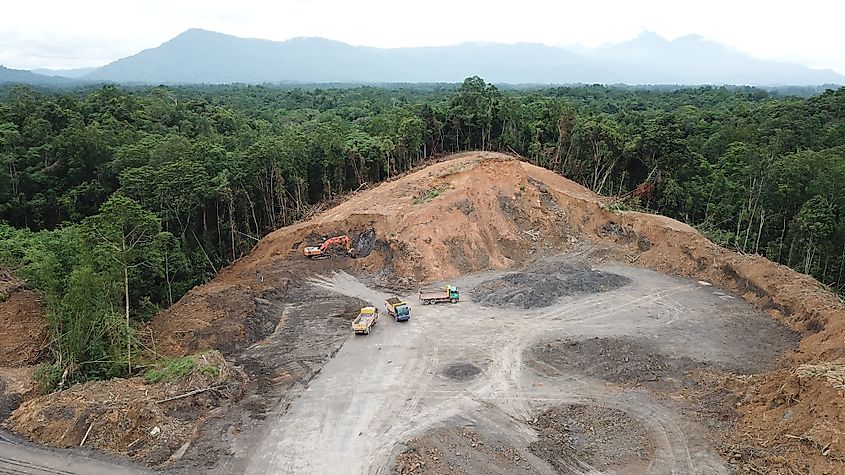
However, deforestation remains one of the biggest threats to orangutans' habitat and population. More than 60% of orangutans' natural habitats in Indonesia and Malaysia have been destroyed over the past 40 years. Their habitats are quickly disappearing due to illegal logging and the creation of agricultural plantations inside protected areas. More than 50% of orangutans live outside protected sites controlled by timber, palm oil, and mining companies. According to National Geographic, the entire Tapanuli orangutan species are in danger of extinction due to the construction of a hydroelectric dam in the middle of its remaining habitat in Sumatra's Batang Toru Forest.
Bornean Orangutan
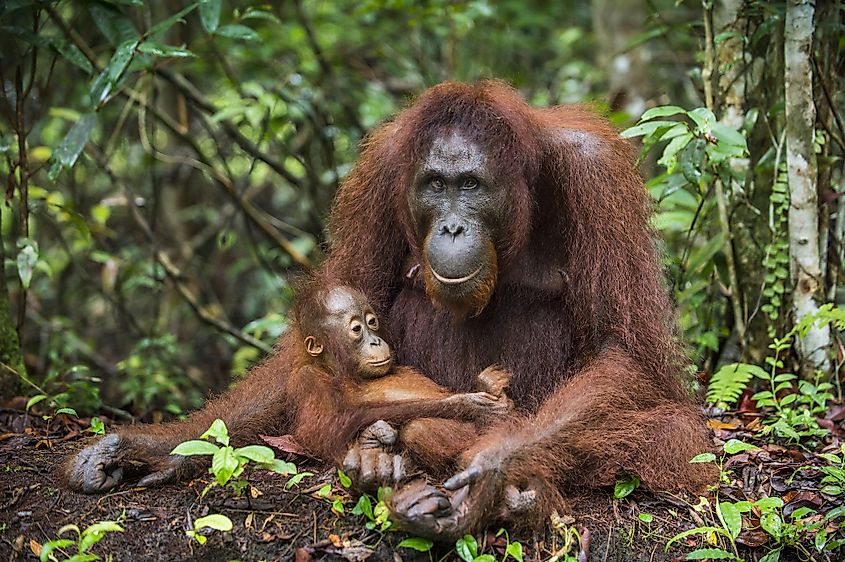
The Bornean orangutans (Pongo pygmaeus), found on the island of Borneo, are listed as critically endangered, despite having the largest population remaining out of all the species of orangutans. Their populations have dropped by more than 50% over the past 60 years, with about 1,900 to 3,100 individuals killed annually. Their habitats have also shrunk by at least 55% over the past 20 years. They are mainly found in Kalimantan in Indonesia and Sabah and Sarawak in Malaysia. Bornean orangutans are divided into three subspecies: northwest Bornean, northeast Bornean, and central Bornean.
The northwest Bornean orangutans are the most threatened subspecies, with a population of approximately 1,500 individuals. Its habitat has been drastically affected by logging and hunting, and its population is fragmented and small. The northwest Bornean orangutans live in Batang Ai National Park and Lanjak Entimau Wildlife Sanctuary in Sarawak, and Betung Kerihun National Park and Danau Sentarum National Park in Kalimantan.
The northeast Bornean orangutans are the smallest in size, with a population of about 16,000 individuals. They can be found in eastern Kinabatangan in Sabah, Berau, and Kutai National Park in Kalimantan. The central Bornean orangutans have the largest population, with about 35,000 individuals. They live in Sebangau National Park, Tanjung Puting National Park, Belantikan, Mawas, and Gunung Palung National Park, all in Kalimantan.
Sumatran Orangutan
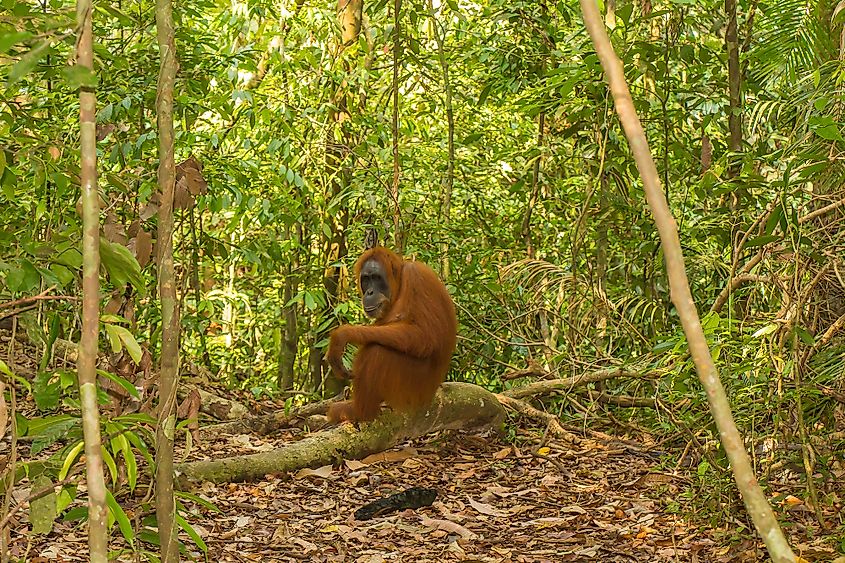
The Sumatran orangutan's (Pongo abelii) range extended from the entire island of Sumatra to Java. They are restricted to the north of Sumatra, with a majority living in the provinces of North Sumatra and Aceh. Sumatran orangutans are critically endangered, and its population has declined by 80% over the last 75 years. This orangutan species is broken up into nine separate populations, of which seven are viable in the long term. Each of these populations has about 250 or more individuals.
Tapanuli Orangutan
The Tapanuli orangutan (Pongo tapanuliensis) was most recently discovered as a distinct species in 2017. They are the most endangered of the great apes, having a population of less than 800 in the wild. These orangutans are only found in the Batang Toru Ecosystem and three Tapanuli districts in North Sumatra. The Batang Toru Ecosystem has over 370,000 acres of land, with about 425 square miles of it dedicated as an orangutan habitat.
Orangutans' range once encompassed a large portion of Asia, but their populations have drastically declined due to deforestation and other threats. The remaining individuals are only found in the islands of Borneo and Sumatra. Orangutans are critically endangered, and their habitats continue to be threatened due to timber, palm oil, and mining industries.











